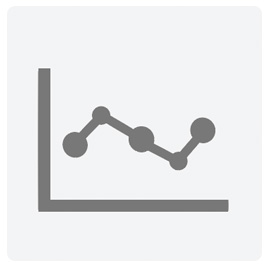Student Affordability includes cost of attendance, net costs relative to peer universities, tuition costs relative to family income, support from university grants, student loan debt at graduation, student loan default rates, credits and semesters on the way to a degree and unmet need after financial aid.
Measures of performance and success should be viewed through the lens of university context and mission. The Universities of Wisconsin have differences in missions, students served, and resource capacity. All UW universities work to create environments that respond to their unique mission-driven mandates and support their student success goals.
Technical Notes
Student Affordability
Published and net cost of attendance
Students who receive grants and scholarships pay substantially less than the published cost of attendance. Published cost of attendance is calculated for Wisconsin resident new freshmen at UW four-year universities as the sum of full-time tuition and fees, room and board for on-campus residence, books, transportation, and miscellaneous costs. UW Colleges published cost of attendance assumes room and board costs for students living off campus with family. When more than one UW university is selected, published cost of attendance is weighted by full-time fall resident undergraduate enrollments. Net cost of attendance is the average amount paid by full-time resident new freshmen receiving grants and scholarships, weighted by on- or off-campus living arrangement using the IPEDS methodology. When more than one UW university is selected, net cost of attendance is weighted by full-time resident new freshmen receiving grants and scholarships. Cost of attendance is not inflation-adjusted. Peer and national costs of attendance are for public four-year institutions and are from the National Center for Education Statistics (NCES) Integrated Postsecondary Education Data System (IPEDS). Published cost of attendance nationally is weighted by fall total undergraduate enrollments. Net cost of attendance nationally is weighted by full-time resident new freshmen receiving grants and scholarships. Cost of attendance for The Pennsylvania State University was not available for 2021-22 academic year, resulting in a lower UW-Madison Peer Max Published Cost than prior years.
Institutional grant aid
Institutional grant aid to undergraduates with financial need is made up primarily of grants and scholarships funded through sources such as donations to UW universities and tuition differentials. Years shown reflect the requirement beginning in 1992 to use the Free Application for Federal Student Aid (FAFSA), the uniform federal guideline for determining student financial need. Inflation adjustments are made using the Consumer Price Index.
Student loan debt
Student loan debt is the cumulative debt incurred by Wisconsin resident bachelor’s degree recipients while enrolled at a UW university. The cumulative debt includes loans directed through or reported to UW financial aid offices. PLUS loans to parents, loans received at non-UW institutions, credit card loans, and home equity loans are not included. Cumulative debt may differ from loan debt reported in the Common Data Set (CDS) because the CDS is based on first-time students. Years shown reflect the requirement beginning in 1992 to use the Free Application for Federal Student Aid (FAFSA), the uniform federal guideline for determining student financial need. Inflation adjustments are made using the Consumer Price Index. To protect student privacy, values for the less than five bachelor’s degree recipients at UW Colleges in 2014-15 are not shown.
Student loan default rates
The U.S. Department of Education office of Federal Student Aid bases the cohort loan default rate on the percentage of federal loans that go into default within three years of baccalaureate graduation. Prior to fiscal year 2009, the default rate was measured over a two-year period. The national default rate includes all higher education institutions that administer federal student loan programs. Default rates reported by the U.S. Department of Education are truncated to the tenths place and may slightly differ from the rates shown here, which are rounded.
Fiscal year 2020 (FY20) and 2021 (FY21) cohort default rates were significantly impacted by the pause on federal student loan payments that began March 13, 2020. During the pause no borrowers with loans held by the U.S. Department of Education entered default and in each fiscal year (FY20, FY21) fewer than 200 borrowers with non-ED-held loans ineligible for the pause entered default.
The cohort default rate for federal student loans that entered repayment in FY19 saw large decreases due to borrowers with federal loans not making payments for more than a year of the 3-year window as the forbearance period was in place due to the coronavirus pandemic. Due to the forbearance period the cohort default rate metric will less accurately reflect the financial well-being of borrowers for several years.
Due to the suspension of student loan payments that began in March 2020, FY18 cohort borrowers were not required to make payments and did not default on federal student loans during the last six months of the three-year default rate window. This resulted in a lower default rate for the FY18 cohort.
As a result of the 2018 restructuring of the Universities of Wisconsin, when calculating the FY16 rate the U.S. Department of Education assigned all borrowers from the University of Wisconsin Colleges to five of the seven University of Wisconsin universities receiving new branch campuses that constituted former University of Wisconsin Colleges locations. When calculating the FY17 & FY18 rates, the U.S. Department of Education assigned all borrowers from the University of Wisconsin Colleges to all seven University of Wisconsin universities receiving new branch campuses that constituted former University of Wisconsin Colleges locations. The result in the affected years is that every former University of Wisconsin Colleges student, borrower or defaulter, is included in the Federal Student Aid Official Cohort Default Rate for Schools for the affected restructured University of Wisconsin universities. Therefore, the DoE default rate in affected years at receiving institutions is higher than the actual default rate. In FY16, the affected default rates include UW-Eau Claire, UW-Green Bay, UW-Milwaukee, UW-Platteville, UW-Whitewater, and the Universities of Wisconsin total. In FY17 & FY18, affected default rates include UW-Eau Claire, UW-Green Bay, UW-Milwaukee, UW-Oshkosh, UW-Platteville, UW-Stevens Point, UW-Whitewater, and the Universities of Wisconsin total.
Unmet need
Average unmet need is the financial need of resident undergraduates remaining after grants, loans, scholarships, and the expected family contribution to college costs. Years shown reflect the requirement beginning in 1992 to use the Free Application for Federal Student Aid (FAFSA), the uniform federal guideline for determining student financial need. Inflation adjustments are made using the Consumer Price Index. Average unmet need is shown for financial aid recipients who had unmet need.
Enrolled semesters of bachelor’s degree recipients (time to degree)
Semesters enrolled at “Any UW” includes fall and spring semesters enrolled at any UW university by students starting as new freshmen at any UW university, including two-year campuses. “Same UW” is based on new freshmen who started at and graduated from the same UW university. Beginning with 2018-19 graduating cohort, “Same UW” includes four-year campus and its affiliated two-year campus(es). Available data begin in 1993-94, when a Universities of Wisconsin-wide goal to reduce time and credits to degree was established. To protect student privacy, values for the less than five bachelor’s degree recipients at UW Colleges in 2014-15 are not shown.
Credits attempted by bachelor’s degree recipients (credits to degree)
Credits to degree at “Any UW” includes UW credits attempted at any UW university by students starting as new freshmen at any UW university, including two-year campuses. “Same UW” is based on new freshmen who started at and graduated from the same UW university. Beginning with 2018-19 graduating cohort, “Same UW” includes four-year campus and its affiliated two-year campus(es). Available data begin in 1993-94, when a Universities of Wisconsin-wide goal to reduce time and credits to degree was established. To protect student privacy, values for the less than five bachelor’s degree recipients at UW Colleges in 2014-15 are not shown. “Same UW” credits to degree at UW Colleges were substantially lower than at other UW universities because the UW Colleges’ Bachelor of Applied Arts & Sciences was designed to include upper level courses at several UW four-year university partners.
UW credits funded by all sources are included in the analysis. Placement credits, credits awarded for prior learning, and credits transferred from non-UW institutions are not included in any credits to degree calculations.








